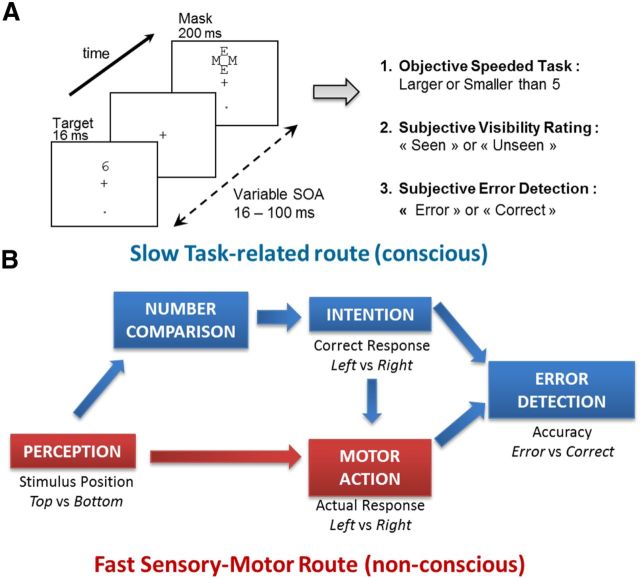Figure 1.
Experimental design and dual-route model. A, On each trial, a number was presented for 16 ms at one of two possible locations (top or bottom). It was followed by a mask composed of a fixed array of letters presented at a varying duration after target onset (16, 33, 50, 66, or 100 ms). Participants first performed a fast forced-choice number comparison task where they decided whether the number was smaller or larger than 5. Then, they evaluated the subjective visibility of the target and their own performance in the primary number comparison task. B, Dual-route model for error detection. In this model, two routes accumulate sensory evidence in parallel. A response is emitted by whichever route first reaches its decision threshold. The first route corresponds to automatic sensory–motor association and can be triggered nonconsciously to produce fast motor responses. The second route corresponds to the slower, voluntary processing of the stimulus according to task instructions and produces a conscious representation of the required response (i.e., a conscious intention). The comparison of the outputs of these two routes allows participants to detect a discrepancy between their intended and ongoing responses, and therefore to self-evaluate their performance.

